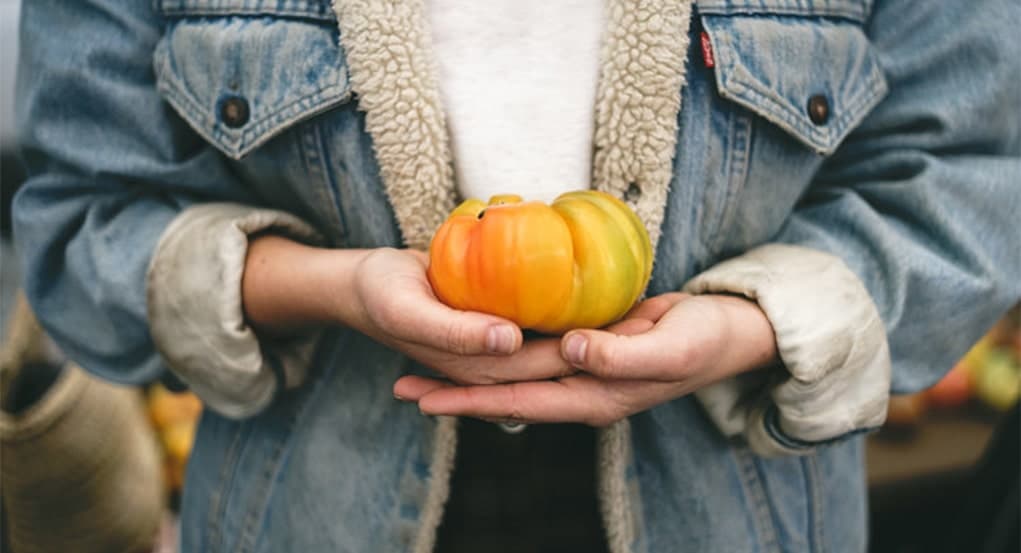



We teamed up with German couple Lars & Alena from Nutritiously to ask the question: Can you eat delicious, appetizing vegan food on a budget?
Carefully choosing what to buy is something almost everyone has been through at some stage of their life. We all need to find a way of eating a healthy and vegan diet on a budget until we have enough money to not care as much.
There’s a very common misunderstanding of healthy, plant-based food being exceptionally expensive. This might stem from the idea that we have to buy expensive supplements, powders, superfoods or vegan meat and dairy substitutes in order to sustain this lifestyle.
These things can be nice to have but aren’t really necessary to thrive and be healthy. If you strip it down to the basics, you will find that the whole food plant-based lifestyle can actually be dirt cheap and easily affordable for anyone.
With a little bit of knowledge, a healthy vegan diet bursting with taste and nutrients will fit your budget even if you have to count every penny.

Restaurant or diner meals are much more expensive compared to self-made ones since you’re paying for the service. Eating out should only be a very occasional treat or avoided altogether if you’re on a budget.
In times of being on the move, try to prepare meals or healthy vegan snacks in advance and take them with you in a lunch box. This way you also have full control over what goes into your meals and aren’t dependent on restaurant foods that might have some shady ingredients in them.
When you prepare your own vegan meals, consider cooking large batches and freeze the leftovers in meal-sized containers this will make them more budget-friendly.
Whole, plant foods are loaded with all the essential nutrients your body needs and should be the base of your healthy diet. The great thing about these unprocessed and pure foods is that they are also the cheapest ones out there, especially the starchy foods.
So make sure you base your vegan recipes around these low-priced yet super healthy and nutrient-dense goodies.

Veggies: Get em at your farmers market (and maybe a vegan donut?!)
Some budget-friendly foods include:
Big packages or family packs usually provide much better value for the cost than small containers or bags. Look out for the unit price which tells you the exact cost per pound, liter etc. This makes it easy to compare products and choose the cheapest option.
To keep your vegan diet on budget, look for the bulk section of your grocery store or maybe there’s even an entire bulk food store nearby. These places let you load up on items such as oats, rice, pasta, nuts, or seeds for a very good price since you’re not paying for packaging or a brand name.
Simple doesn’t have to mean boring. Make starches your base and experiment with simple but flavorful ingredients and spices. Not stuffing your recipes with too many ingredients will make things easier on your digestion, too. Think of baked potatoes with homemade sugar-free ketchup, roasted pumpkin with guacamole or banana ice cream. Sounds delicious, right?
If you recognize that you bought too many fruits or vegetables and they’re about to turn bad, go ahead and freeze them. Ripe or even overripe fruit can still be frozen and turned into a delicious smoothie later on. Frozen vegetables can make a tasty stew or soup.
Whenever you find an exceptionally good deal on fresh produce, you can stock up and freeze them as well.
Some foods can easily be made by yourself. It surely requires a bit of time and effort, but the savings can be huge compared to the canned or packaged versions. Dry legumes, for instance, can be up to 5 times cheaper than canned.
Other items that could be prepared by yourself include plant milk, sauces, or spreads. Here are a few recipes to inspire you:

4 Seasons for a reason!
Foods that are grown in season not only taste better but also are a lot cheaper. That may be root vegetables and citrus fruits in winter, squash and figs in fall or watermelon and nectarines in summer.
For a full overview of what foods are currently in season, have a look at this seasonal calendar.
Visit your local farmers market to be inspired by the variety of flavorful, in-season produce.
Farmer’s markets offer you a great variety of local, seasonal, and nutritious produce. Buying directly from the grower supports your local community and is also cheaper in some cases. Helping you keep costs down and meet your budget needs.
Sometimes the sellers have tables with reduced fruits and vegetables that have a few blemishes and there’s almost always the option to get a discount if you decide to buy in bulk.
Going to the farmer’s market shortly before they close is also a good way to make some bargains because the sellers want to get rid of their produce quickly at this point.
Find a farmers market close to you here.
If there is more than one grocery store available near you, have a look at the different offers and discounts. You can find information about current offers and coupons in the newspaper or online.
Doing a little bit of research helps you to find the best deals across different stores and supermarkets. It can also inspire you to adapt your meal plans to the foods that are currently on sale and, therefore, give you some added variety.
Keep in mind that this makes sense only if the venues aren’t spread out too much. Getting a discount on products is pointless if you’re wasting the same amount of money or more on fuel. In that case, sticking to just one store is the better option.
Opt for store brands whenever possible. They often times offer the same quality at a much lower price as you save on advertising and packaging.
Look at the bottom shelves for lower-priced items. The priciest ones are usually located at eye-level.
If your grocery store has a loyalty program, make sure to sign up for even more savings.
Be careful with fresh fruits and vegetables that don’t last very long. You definitely don’t want your food to spoil, so buy only the amounts you really know you’re going to eat.
Check your newspaper as well as your email inbox (given you signed up for a store membership) for coupons, sales, or specials to make some extra savings on foods that are on your shopping list. You can also have a look online to get some printable coupons.
When one of your staple foods (one that can’t turn bad quickly) is on sale, make sure to buy in bulk and stock up on it. This can be anything with a far away expiration date such as plant milk, nut butter, canned or frozen vegetables, pasta, beans etc.
Go grocery shopping after you’ve eaten. You always want to be full and satiated when buying your food. By eating right before you go shopping, you are far less prone to make any emotional decisions.
Frozen fruits and vegetables are extremely convenient and often cheaper than their fresh counterparts. Frozen foods are picked ripe and then flash-frozen right away to maintain a great nutritional profile.
Especially in the wintertime, when variety and quality of fresh produce aren’t optimal, buying frozen could be your best choice. Read the ingredients label though and watch out that there’s no added seasoning, sauce, or butter.
Plain water nourishes you best and is all your body needs in terms of drinks. Drink tap water if it’s of decent quality (you can also enhance the quality with a cheap but effective water filter). Otherwise, store-bought still water, especially in big canisters, is still pretty cheap and a good option.
Also, have a look at findaspring.com and see if there’s a spring in your local area that can provide you with fresh and clean water totally free of cost – all you need is a big container to store and transport the water.
Infuse your water with lemon or other fruit juices if you like to indulge in different kinds of flavors. Tea is also a very healthy and affordable alternative. Just make sure you stay away from sodas or other sugary drinks that won’t do your wallet and health any good.
This is, of course, the biggest money saver out there, but it can also be a very challenging project. Start with a few pots of greens and work your way up from there.
While it surely is an ambitious project to start, growing your own food can be highly satisfying and joyful. You will have full control over the end product from soil composition to fertilization and will be able to eat it right after harvesting. It doesn’t get any fresher than that.
Not everyone is so blessed to have their own backyard, but even in small places or apartments, there are possibilities like using pots, window boxes, or containers. The book Grow Great Grub: Organic Food from Small Spaces is an excellent resource to successfully start growing your own produce.

Grow your own… Veggie boxes are much cheaper these days
Plan your meals and snacks ahead and make a shopping list accordingly. This will prevent you from impulsive buying.
Be realistic about the portion sizes and try to include foods that you already have at home in your meal plan.
There are a lot of ways to cut down costs if you’re on a very tight budget, but no matter what, make sure to not deprive yourself and sacrifice your health.
Fortunately, healthy foods can be extremely cheap. Building your vegan diet upon a base of starchy foods will give you an excellent foundation of nutritious calories for little money. Leafy greens also offer a very high density of vitamins and minerals and should be a staple of your diet.
Be creative with new but simple recipes and mix things up to get all the nutrients you need. It doesn’t take expensive ingredients to achieve well-being and mouth-watering flavors.
We would like to thank Lars & Alena from Nutritiously for their help compiling this super helpful guide!

Lars & Alena, a young couple from Germany that’s enthusiastic about healthy eating and living.